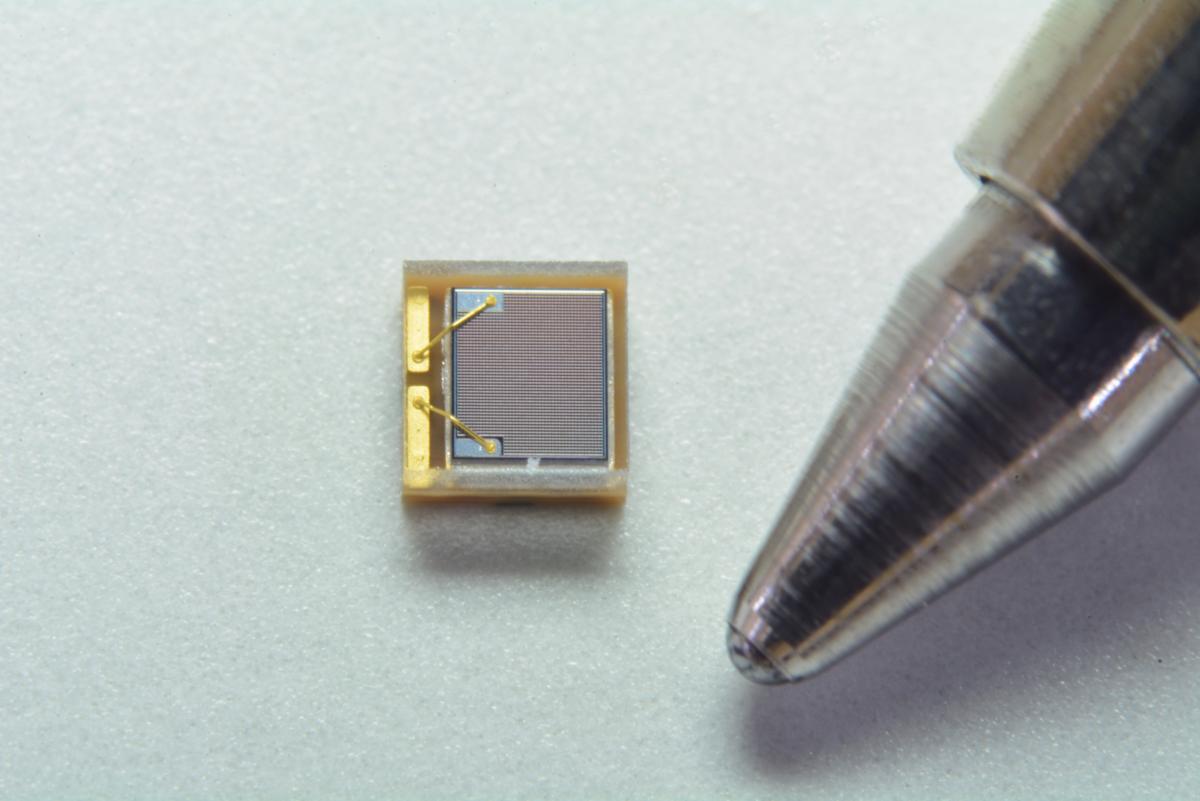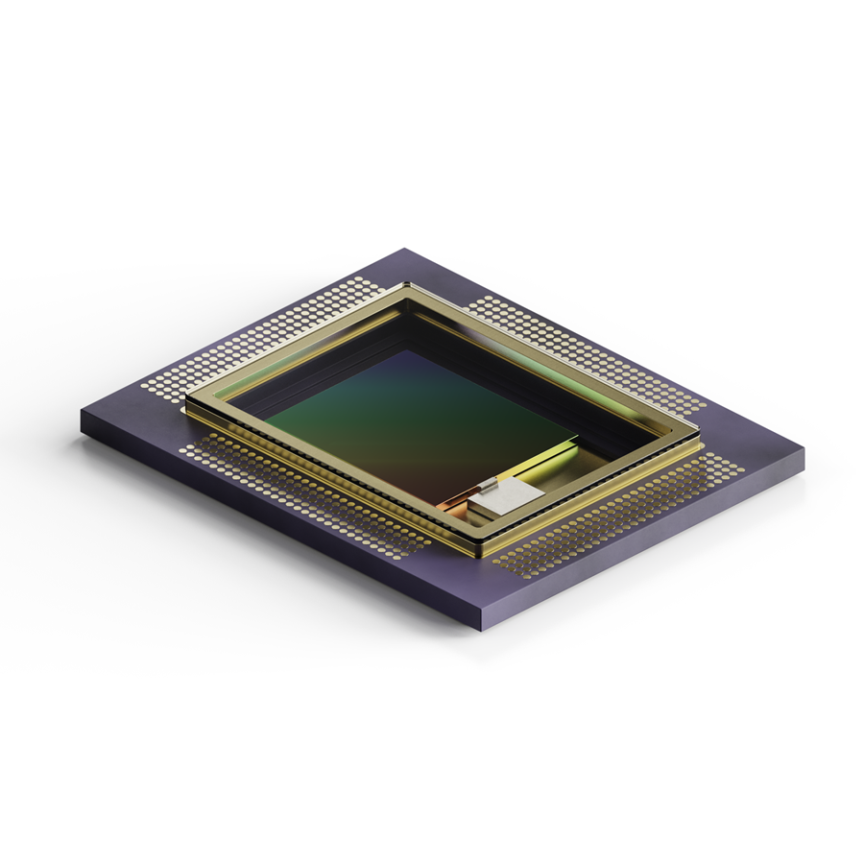A look at the market for lidar and some of the systems, products and solutions available
Light detection and ranging (lidar), is a remote sensing method that uses the pulse from a laser to collect measurements. These are used to create 3D models and maps of objects and environments. A typical lidar sensor emits pulsed light waves into the surrounding environment, which bounce off surrounding objects and return to the sensor. The sensor uses the time between each pulse leaving and returning to calculate the distance it travelled. This process must be repeated millions of times per second for a real-time 3D map of the environment to be produced.
The first recorded lidar-like system was introduced by the Hughes Aircraft Company, led by physicist Malcolm Stitch. The system combined laser-focused imaging with the ability to calculate distances by measuring the time for a signal to return using appropriate sensors and data acquisition electronics. Some of the first applications for lidar were in meteorology. For example, the National Center for Atmospheric Research used it to measure clouds and pollution. In 1971, it gained even more prominence when astronauts on the Apollo 15 mission used a laser altimeter to map the surface of the moon.
In more recent years, advancements in lidar have opened up more markets, such as defence, corridor mapping and topographical survey, automotive, mining, oil and gas, and consumer electronics, which are increasing the market scope of the lidar market. According to the latest market report from Grand View Research, the global lidar market size was valued at $1.81bn in 2021 and it is expected to expand at a compound annual growth rate (CAGR) of 9.8 per cent from 2022 to 2030.
Lidar optical products on the market now
Vendors of products and systems for the lidar market include Advanced Micro Foundry, which provides optical transmitters and receivers for solid state lidar in autonomous vehicles. The company provides a low-cost solid-state lidar development with both transmitters and receivers.
Analytik has an airborne platform that simultaneously collects hyperspectral imaging and lidar measurements. The integrated UAV system can be equipped with a variety of hyperspectral imaging (HSI) and lidar sensors, enabling creation of a high-resolution digital elevation model (DEM) of the surveyed area. Importantly, the HSI and lidar sensors can be mounted onto small, lightweight drones.
Boston Electronics Corporation supplies quantum cascade tunable IR lasers (3.3 to 17+ microns); UV and IR detectors; single-photon counting electronics and systems for single-molecule detection, FLIM, spectroscopy, diffuse optical tomography and laser radar.
Excelitas Technologies offers emitter solutions at both 905 and 1550 nm, as well as other wavelengths on demand. On the detection side, both Silicon and InGaAs are available, in either PIN or APD variants. Drive and readout electronics are also available. These products are field-proven in defence, aerospace and outer space lidar applications. Monolithic arrays are also available where higher resolution is required.
Focuslight Technologies develops and manufactures high-power diode lasers and laser optics for advanced manufacturing, health, research, automotive and consumer electronics. It also manufactures photonic application modules and systems. The IMO Wide Angle Diffuser is a glass refractive optical element (ROE) with the ability to disperse laser light in one direction up to a full illumination angle, ranging from a few mrad up to 150 degrees. The FocusFlux AL01 series is a high peak power, 1064nm laser module. It features a 1.5mJ 3ns laser pulse based on Q-switch technology.
Hamamatsu offers a variety of devices for lidar, including pulsed laser diodes as light sources and Si APDs, InGaAs APDs, and MPPCs (SiPMs) as photosensors.
Hübner Photonics’ Cobolt Tor XE 532nm delivers 0.25mJ per pulse at up to 1 kHz repetition rate in a compact laser head that contains all drive electronics. It is intended for integration into instruments for marking, laser-induced breakdown spectroscopy (LIBS), lidar, as well as photoacoustic microscopy applications. The Cobolt Tor XE 532nm delivers kHz repetition rates, short pulse lengths (1-3 ns) and excellent pulse-to-pulse stability (jitter < 2 us) for a passively Q-switched laser in a TEM00 beam.
Leosphere works in the field of atmospheric lidar and offers remote-sensing instruments allowing wind measurement, aerosol (ice, ash, dust, smoke) characterisation and localisation and cloud height and atmospheric structure (boundary layer, aerosol layers). The Windcube 400S-AT is a new generation of long-range scanning wind Doppler lidar that scans in real time all zones of potential hazard within the airport air space and sends automatic alerts to air traffic controllers.
Licel has introduced a gated PMT module aimed at the lidar market. The high dynamic range photomultiplier has been specifically optimised to enhance the results of measurements in pulsed applications. The socket has stabilised last dynodes for the strong, near-field signal, a protection circuit against continuous high intensity and a HV supply.
Luminar Technologies’s Hydra is a lidar sensor designed for highway driving that can detect and classify objects out to 250m. It is capable of lidar super[1]resolution. Sentinel is a full-stack autonomous solution with a suite of sensors, featuring Luminar’s Iris lidar sensor, which has a max range of 600m, 120 degree FOV, and camera-like resolution up to 300 points per square degree.
Precision Laser Scanning offers a range of polygon scanners for lidar scanning. The Motor In Mirror (MIM) large aperture scanner design has a very low profile by building the compact, precision scanning motor inside a hollow, precision polygon mirror. The mirror aperture is large enough to see hundreds of metres ahead of the vehicle. Scan rates in the KHz range are possible with very low power consumption. The Gecko-Four polygon scanner for lidar has a 25mm aperture for a useful range of over 200m and its four facets give a scan angle of 120 degrees. The scan rate is up to 267Hz for high resolution.
Pro-Lite serves customers working with lidar and ADAS sensors with certified targets of diffuse reflectance made by partner companies, Labsphere and SphereOptics. Labsphere’s Spectralon and Permaflect targets, as well as the Zenith and Zenith Lite targets made by SphereOptics, provide near[1]perfect diffuse reflectance in the 250-2,500nm spectral range, and in particular at the critical NIR wavelengths used with lidar and ADAS systems.
Riegl focuses on pulsed time[1]of-flight laser radar technology in multiple wavelengths. Its core smart waveform technologies provide pure digital lidar signal processing, unique methodologies for resolving range ambiguities, multiple targets-per-laser shots, optimum distribution of measurements, calibrated amplitudes and reflectance estimates. Sick’s 3D lidar sensors detect their environment nearly gap-free, regardless of whether the objects move or not. This makes them ideally suited for tasks such as collision protection on automated vehicles or the scanning of objects.
The IP-S3 positioning system from Topcon Positioning Systems integrates an Inertial Measurement Unit (IMU), GNSS receiver and a vehicle odometer. The rotating lidar sensor captures the environment with a rate of 700,000 pulses per second. During each rotation, the 32 internal lasers cover the full 360 degrees around the system. This minimises gaps in the point cloud which arise from obstacles or dead angles and removes the need for multiple scanners.
Trimble Geospatial provides land surveying, GIS, scanning, mobile mapping, remote sensing, photogrammetry and forensics professionals with hardware and software solutions. Its Trimble MX50 mobile mapping system for asset management and mapping is a vehicle-mounted mobile lidar system, a mid-range option for first-time mobile mapping users and experienced providers to expand their equipment fleet.
Teledyne Optech offers survey-grade OEM lidar sensors for integration with mobile and UAV platforms. Available as a transceiver for system integration, the compact lidar sensors enable high-quality data in complex environments. Featuring high[1]range performance, cross-track point density and outstanding vegetation penetration, the sensors are designed to offer data precision for tight[1]tolerance applications.
Velodyne Lidar provides lidar solutions for autonomous vehicles, driver assistance, delivery solutions, robotics, industrial, infrastructure, navigation, mapping and more. Its product line includes Puck, Ultra Puck, the autonomy[1]advancing Alpha Prime, the ADAS- and robotics[1]optimised Velarray.
The Valeo third-generation lidar sensor system can scan the vehicle’s environment 25 times a second. As an autonomous car sensor, it combines long-range detection on the road, covering more than 200m, with a wide field of vision. It identifies and categorises all objects around the car, measures the speed and direction of moving objects and tracks other vehicles, even when they are no longer in the driver’s field of vision.
This is not an exhaustive list. If you provide systems, products and solutions for lidar and would like to be included, please let us know at editor.electro@europascience.com

Hamamatsu: Featured lidar product
Photonics for automotive lidar
Sensing technologies for detecting the distance between cars and surrounding obstacles has become increasingly important for lidar. In recent years, great progress has been made towards realising fully autonomous automobiles. Lidar has high azimuth resolution, making it possible to find the distance, shape and relative positions of surrounding vehicles, pedestrians, buildings and other objects with high accuracy. This technology has attracted attention for its potential in various applications, including advanced driver-assistance systems and automatic guided vehicles.
For more than 40 years, Hamamatsu Photonics has been supplying market-leading, high-quality optical components that contribute to the diverse advanced technologies that assist in safe, reliable, green and comfortable automobiles.
The company offers a wide range of devices for lidar, including pulsed laser diodes as light sources and Si APDs, InGaAs APDs, and MPPCs (SiPMs) as photosensors. From design to manufacturing, Hamamatsu Photonics deliver standard and customised solutions with high-volume manufacturing capabilities. Find out more about Photonics for automotive lidar on the Hamamatsu website.


